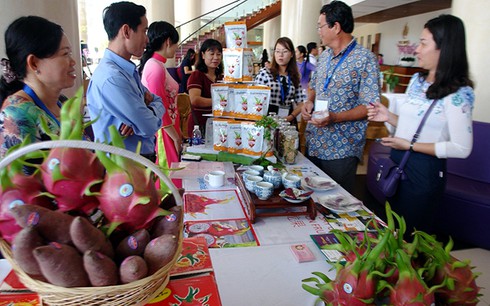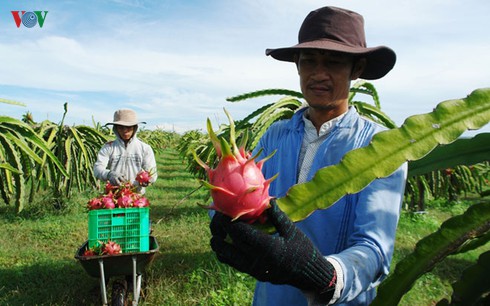Vietnamese dragon fruits’ journey to Australia
(VNF) - Australia on August 24 announced the permission for Vietnamese dragon fruits to enter its market, making Vietnam the first country to gain such approval.

|
Dragon fruit therefore has emerged as one of Vietnam’s key fruits for export, with export sales amounting to US$895.7 million last year (source: VOV)
It is a milestone for Vietnamese agriculture as dragon fruits has found its way to increase its presence in the global market.
As Australia has strict standards for imported products, especially food, it was not easy for Vietnamese dragon fruits to be accepted in the market.
In June of last year, Australia sent a working team to Vietnam to review biosecurity import requirements for fresh dragon fruit.
Five months later, in mid January, Australian agricultural officials released the final report on the quality of fresh dragon fruit from Vietnam.
On the sidelines of the 23rd Meeting of Asia-Pacific Economic Cooperation (APEC) Ministers Responsible for Trade in May, dragon fruits’ entry to Australia was one of the key issues discussed by Vietnamese Minister of Industry and Trade Tran Tuan Anh and Australian Minister for Trade, Tourism and Investment Steven Ciobo.
In mid-June, a letter was sent to the Vietnamese Ministry of Industry and Trade by the Australian Embassy in Vietnam, detailing the process of opening the market for Vietnamese fresh dragon fruit.

The fresh dragon fruit must originate, be produced and exported from Vietnam, in accordance with relevant conditions and programmes. (source: VOV)
Packaging must be done using synthetic materials or highly processed materials of plant origin; unprocessed materials such as straw cannot be used.
At the same time, the cartons or inpidual packages must be tied firmly and labelled with unique identifier to facilitate traceability.
The treated products afterwards must be protected from harmful insects during and after packaging, while handling, storing and transporting between locations.
Products that have been inspected and certified by a competent authority from Vietnam must be stored in a safe place, so as not to be mixed with fruits exported to other markets, or for consumption in the domestic market.
Furthermore, containers must be inspected by the PPD prior to loading and ensure there are no insects, and all vents must be covered to prevent insect infiltration.
In addition, the Australian Department of Agriculture and Water Resources may sample and quarantine any shipments at the first port of entry. The dragon fruit is not allowed to be transported by air or by road until the consignment is cleared at a biological safety check point. If consignments are found to have live insects posing a bio-safety risk, the consignment must be disposed of, re-exported, or destroyed.
The cost of any requested action is to be paid by the importer. In particular, the Australian Department of Agriculture and Water Resources may review import policies at any time after the commencement of trade or when pest and disease control in Vietnam is altered.
According to the Ministry of Agriculture and Rural Development (MARD),
